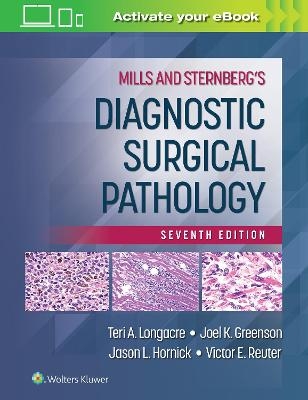
Gynecologic and Urologic Pathology
Cambridge University Press
978-1-107-17045-2 (ISBN)
Due to common early development, the pathology of the urogenital tract in males and females present many similarities. Richly illustrated in colour throughout, this essential text evaluates the most common pathologies of the male and female urogenital tract, focussing on similarities, differences, and challenges. Images are colour coded by gender, and feature diagnostic algorithms and boxes highlighting key similarities and differences. This book is intended to bridge the gap between urologic and gynecologic specialties, whose diagnoses are rarely considered or studied together. Understanding common development, similarities and differences is extremely valuable for the evaluation of pathologic features and related dysfunctions. This comprehensive resource will be invaluable to urological and gynaecological pathologists,residents, general pathologists, and for consultants in urology and gynaecology to gain experience in the pathologic diagnostic rationale. This book provides entry to an online version on Cambridge Core, which can be accessed via the code printed on the inside of the cover.
Maria Rosaria Raspollini is a consultant pathologist at the Department of Histopathology and Molecular Diagnostics at the University Hospital Careggi of Florence, Italy. Her expertise and research activity has been focussed on gynaecological and urological pathology. Antonio Lopez-Beltran is Professor of Anatomic Pathology, and the Director of the Service of Anatomic Pathology at the Champalimaud Clinical Center in Lisbon, Portugal.
Part I. Notes on Embryology, Differentiation, and Function of the Uro-Genital Tract: 1. Embryonic development of the urinary system; 2. Indifferent embryonic development (pre-sex determination); 3. Male; 4. Female; Part II. Ovary and Testis: Similarities and Differences: 5. Non-neoplastic and tumor-like conditions of the ovary; 6. Non-neoplastic and tumor-like conditions of the testis; 7. Disorders of sexual development; 8. Ovarian epithelial-stromal tumors and similar lesions in the testis; 9. Germ cell tumors: the ovary and the testis; 10. Sex-cord stromal tumors: the ovary and the testis; Part III. Prostatic Lesions and Tumors: 11. The prostatic utriculus and endometrioid prostate cancer; 12. Cystic lesions of the prostate and lower genitourinary tract versus female gynecologic tract lesions: similarities and differences; 13. Biphasic tumors of the urogenital tract: selected topics; 14. Ectopic prostatic tissue; 15. Mesonephric remnants; 16. Prostate and breast pathology: similarities and differences; Part IV. Kidney Tumors and Neoplasms with Similar Features in the Gynaecological Tract: 17. Clear cell tumors of the kidney and clear cell tumors of the gynecological tract; 18. Mixed epithelial and stromal tumors of the kidney; 19. Mixed epithelial and mesenchymal tumors of the uterus; 20. Ovarian mixed epithelial-stromal tumors; 21. Mesenchymal tumors of the kidney; 22. Mesenchymal tumors of the female genital tract; Part V. Neuroendocrine Tumors: 23. Similarities and differences in neuroendocrine tumors of the male and female genital tracts and urinary tract; Part VI. Transitional Cell Tumors: 24. Brenner tumors and transitional cell tumors of the ovary; 25. Transitional cell tumors of the bladder; 26. Squamotransitional carcinoma and transitional cell metaplasia of the cervix and the vagina, and squamous cell carcinoma and squamous lesions of the urinary tract; 27. Micropapillary urothelial carcinoma of the bladder versus gynaecological tract carcinomas with micropapillary features: similarities and differences; Part VII. Urethra and Non-transitional Tumor of the Bladder: 28. Pathology of female and male urethra; 29. Bladder mullerian lesions: endometriosis, endosalpingiosis, endocervicosis, and mullerianosis; 30. Clear cell carcinoma of the urinary tract versus clear cell carcinoma of the ovary: similarities and differences; 31. Cystic and solid tumors of the urachus versus gynecologic tract tumors: similarities and differences; Part VIII. Vulva and Penis: 32. Dermatoses and inflammatory diseases of the vulva; 33. Dermatoses and inflammatory diseases of the penis; 34. Intraepithelial lesions of the vulva; 35. Intraepithelial lesions of the penis; 36. Malignant neoplasms of the vulva and the penis; 37. Miscellaneous lesions of the vulva and the penis; Part IX. Secondary Tumors: 38. Secondary tumors of the male and female genital tracts and urinary tract: similarities and differences.
| Zusatzinfo | 55 Tables, black and white; 131 Plates, color; 131 Halftones, color |
|---|---|
| Verlagsort | Cambridge |
| Sprache | englisch |
| Maße | 225 x 284 mm |
| Gewicht | 1750 g |
| Themenwelt | Medizin / Pharmazie ► Medizinische Fachgebiete ► Gynäkologie / Geburtshilfe |
| Medizin / Pharmazie ► Medizinische Fachgebiete ► Urologie | |
| Studium ► 2. Studienabschnitt (Klinik) ► Pathologie | |
| ISBN-10 | 1-107-17045-1 / 1107170451 |
| ISBN-13 | 978-1-107-17045-2 / 9781107170452 |
| Zustand | Neuware |
| Informationen gemäß Produktsicherheitsverordnung (GPSR) | |
| Haben Sie eine Frage zum Produkt? |
aus dem Bereich

